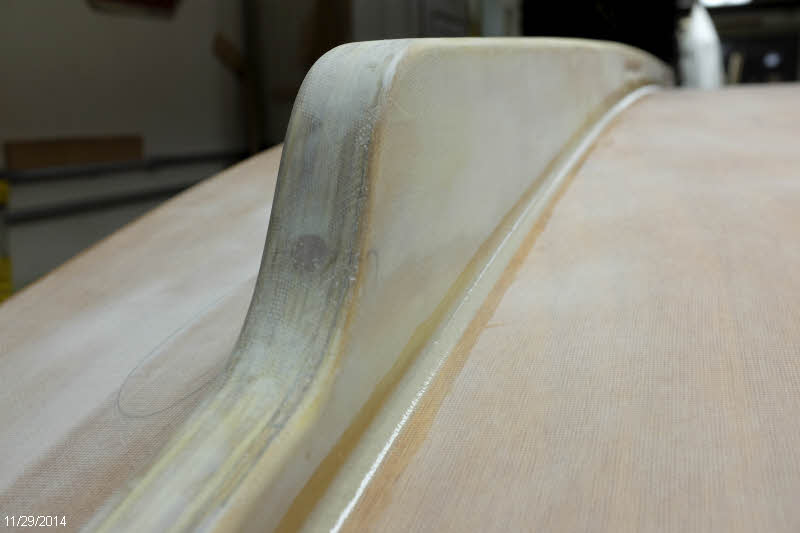There's something about applying fresh paint that is very satisfying. I've been doing my best to work clean, avoiding any epoxy drips and being careful to sand evenly, and now it's nice to see all that attention to detail pay off with a nice paint job.
With the hull upside down it's easy to paint the underside of the cabin top and other areas. Here's a shot of the painting I've been doing under there at the same time I've been working on skegs and other things. This is Rustoleum 'Canvas White'. Against the gloss white in the interior spaces it looks fairly yellowish to me. But it's lit by fluorescent lighting, so not sure what it will look like in daylight. I'm going with it for now, and can always repaint later if I want to.
I have the boat sitting on blocks under the mast trunk, and on one sawhorse about in mid-seating area. There's plenty of room to work underneath with that arrangement.
But here's what I'm excited about - paint on the hull exterior! I started with a brush to do the skegs with their finger grips and fillets.
And then a foam roller for the remaining areas. This is again Rustoleum paint from Menards. It seems to go on well and look good.
Here I have two coats on the bottom and garboard planks, and one coat on the other two hull planks. It's looking pretty good! I'm holding off on the transom until I have the rudder hardware mounted, and a boarding ladder constructed.
Here's a shot of the pointy end, where I spent so much time fairing in the two layers of dynel cloth that I applied for abrasion resistance. It's not perfect, but I would say there is no lumpiness, and that was my goal.
I applied this paint directly over the 80-grit sanded epoxy with no primer. After the first coat, I could see the scratch marks left from the sander. After the second coat, less so.
I'm not really going for an absolutely glass-smooth high-gloss auto finish here. I'm looking for something that looks good from a bit of distance and is easy to repair and maintain. I'm thinking this level of finish is just about what I'm looking for.

















































